Xinchi Chen
Thinking with Video: Video Generation as a Promising Multimodal Reasoning Paradigm
Nov 06, 2025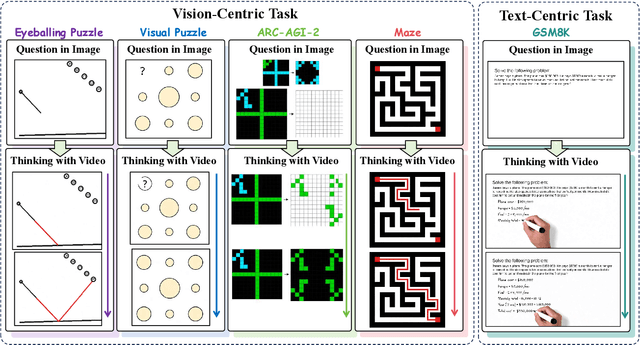
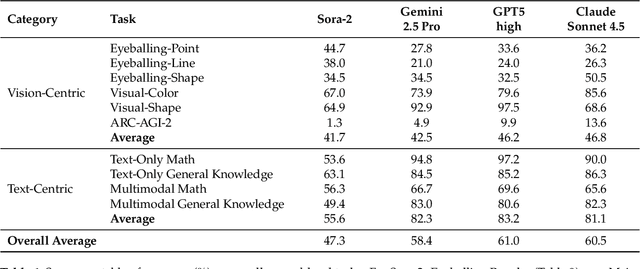
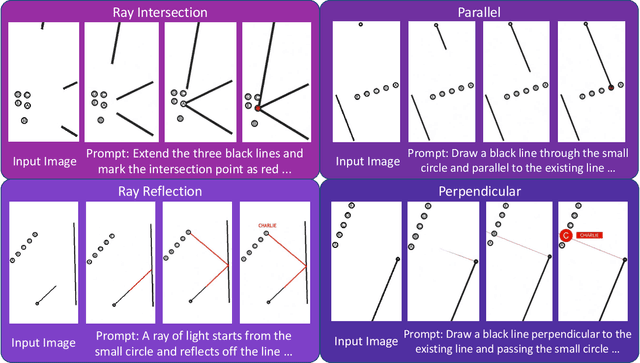
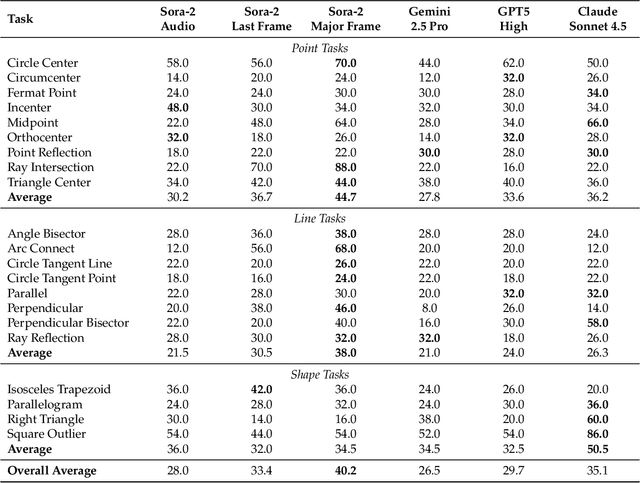
Abstract:"Thinking with Text" and "Thinking with Images" paradigm significantly improve the reasoning ability of large language models (LLMs) and Vision Language Models (VLMs). However, these paradigms have inherent limitations. (1) Images capture only single moments and fail to represent dynamic processes or continuous changes, and (2) The separation of text and vision as distinct modalities, hindering unified multimodal understanding and generation. To overcome these limitations, we introduce "Thinking with Video", a new paradigm that leverages video generation models, such as Sora-2, to bridge visual and textual reasoning in a unified temporal framework. To support this exploration, we developed the Video Thinking Benchmark (VideoThinkBench). VideoThinkBench encompasses two task categories: (1) vision-centric tasks (e.g., Eyeballing Puzzles), and (2) text-centric tasks (e.g., subsets of GSM8K, MMMU). Our evaluation establishes Sora-2 as a capable reasoner. On vision-centric tasks, Sora-2 is generally comparable to state-of-the-art (SOTA) VLMs, and even surpasses VLMs on several tasks, such as Eyeballing Games. On text-centric tasks, Sora-2 achieves 92% accuracy on MATH, and 75.53% accuracy on MMMU. Furthermore, we systematically analyse the source of these abilities. We also find that self-consistency and in-context learning can improve Sora-2's performance. In summary, our findings demonstrate that the video generation model is the potential unified multimodal understanding and generation model, positions "thinking with video" as a unified multimodal reasoning paradigm.
MARAG-R1: Beyond Single Retriever via Reinforcement-Learned Multi-Tool Agentic Retrieval
Oct 31, 2025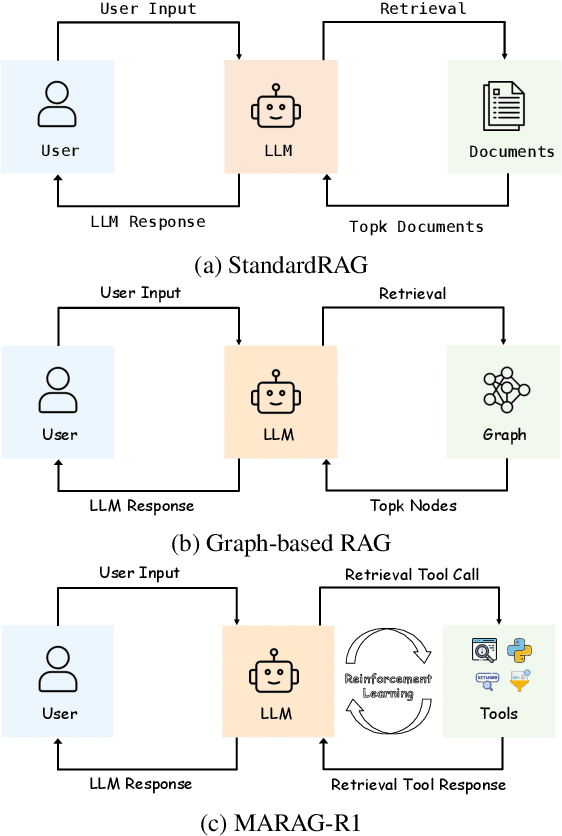
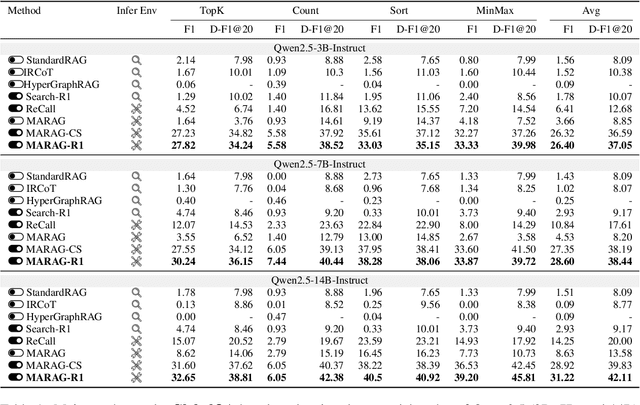
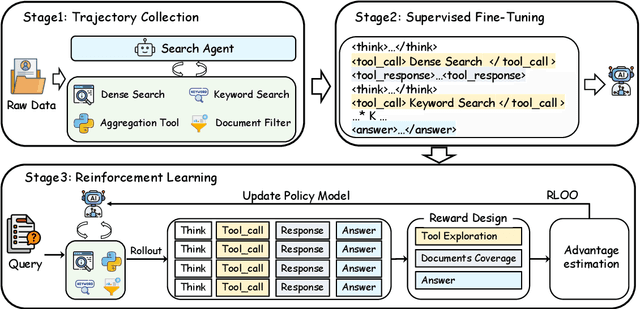
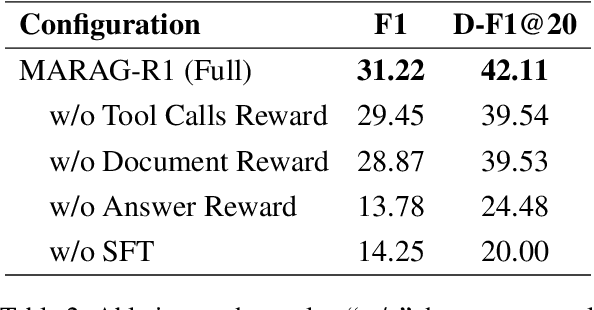
Abstract:Large Language Models (LLMs) excel at reasoning and generation but are inherently limited by static pretraining data, resulting in factual inaccuracies and weak adaptability to new information. Retrieval-Augmented Generation (RAG) addresses this issue by grounding LLMs in external knowledge; However, the effectiveness of RAG critically depends on whether the model can adequately access relevant information. Existing RAG systems rely on a single retriever with fixed top-k selection, restricting access to a narrow and static subset of the corpus. As a result, this single-retriever paradigm has become the primary bottleneck for comprehensive external information acquisition, especially in tasks requiring corpus-level reasoning. To overcome this limitation, we propose MARAG-R1, a reinforcement-learned multi-tool RAG framework that enables LLMs to dynamically coordinate multiple retrieval mechanisms for broader and more precise information access. MARAG-R1 equips the model with four retrieval tools -- semantic search, keyword search, filtering, and aggregation -- and learns both how and when to use them through a two-stage training process: supervised fine-tuning followed by reinforcement learning. This design allows the model to interleave reasoning and retrieval, progressively gathering sufficient evidence for corpus-level synthesis. Experiments on GlobalQA, HotpotQA, and 2WikiMultiHopQA demonstrate that MARAG-R1 substantially outperforms strong baselines and achieves new state-of-the-art results in corpus-level reasoning tasks.
Towards Global Retrieval Augmented Generation: A Benchmark for Corpus-Level Reasoning
Oct 30, 2025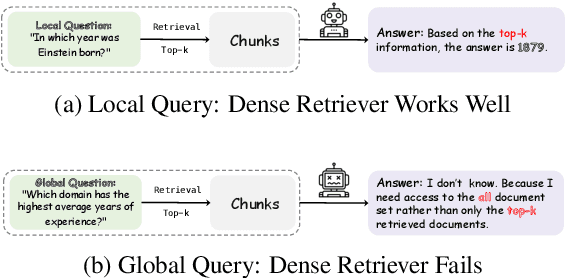
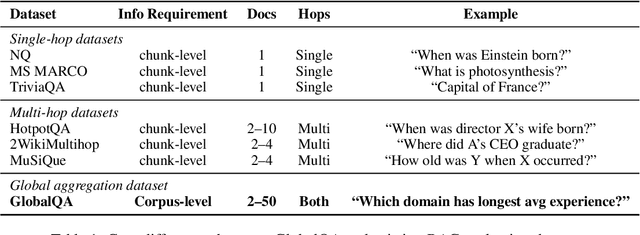
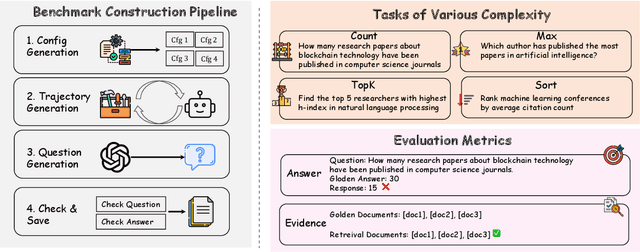
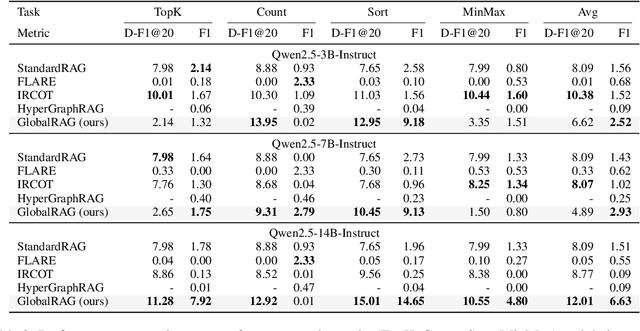
Abstract:Retrieval-augmented generation (RAG) has emerged as a leading approach to reducing hallucinations in large language models (LLMs). Current RAG evaluation benchmarks primarily focus on what we call local RAG: retrieving relevant chunks from a small subset of documents to answer queries that require only localized understanding within specific text chunks. However, many real-world applications require a fundamentally different capability -- global RAG -- which involves aggregating and analyzing information across entire document collections to derive corpus-level insights (for example, "What are the top 10 most cited papers in 2023?"). In this paper, we introduce GlobalQA -- the first benchmark specifically designed to evaluate global RAG capabilities, covering four core task types: counting, extremum queries, sorting, and top-k extraction. Through systematic evaluation across different models and baselines, we find that existing RAG methods perform poorly on global tasks, with the strongest baseline achieving only 1.51 F1 score. To address these challenges, we propose GlobalRAG, a multi-tool collaborative framework that preserves structural coherence through chunk-level retrieval, incorporates LLM-driven intelligent filters to eliminate noisy documents, and integrates aggregation modules for precise symbolic computation. On the Qwen2.5-14B model, GlobalRAG achieves 6.63 F1 compared to the strongest baseline's 1.51 F1, validating the effectiveness of our method.
Improving Cross-task Generalization of Unified Table-to-text Models with Compositional Task Configurations
Dec 17, 2022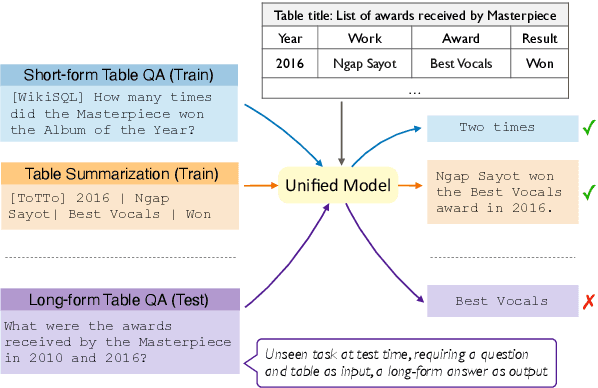
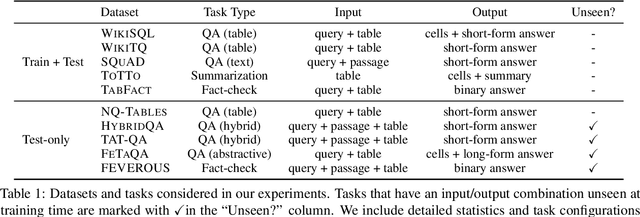
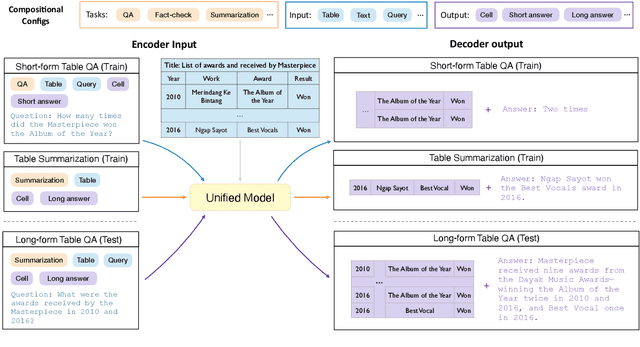

Abstract:There has been great progress in unifying various table-to-text tasks using a single encoder-decoder model trained via multi-task learning (Xie et al., 2022). However, existing methods typically encode task information with a simple dataset name as a prefix to the encoder. This not only limits the effectiveness of multi-task learning, but also hinders the model's ability to generalize to new domains or tasks that were not seen during training, which is crucial for real-world applications. In this paper, we propose compositional task configurations, a set of prompts prepended to the encoder to improve cross-task generalization of unified models. We design the task configurations to explicitly specify the task type, as well as its input and output types. We show that this not only allows the model to better learn shared knowledge across different tasks at training, but also allows us to control the model by composing new configurations that apply novel input-output combinations in a zero-shot manner. We demonstrate via experiments over ten table-to-text tasks that our method outperforms the UnifiedSKG baseline by noticeable margins in both in-domain and zero-shot settings, with average improvements of +0.5 and +12.6 from using a T5-large backbone, respectively.
Language Agnostic Multilingual Information Retrieval with Contrastive Learning
Oct 12, 2022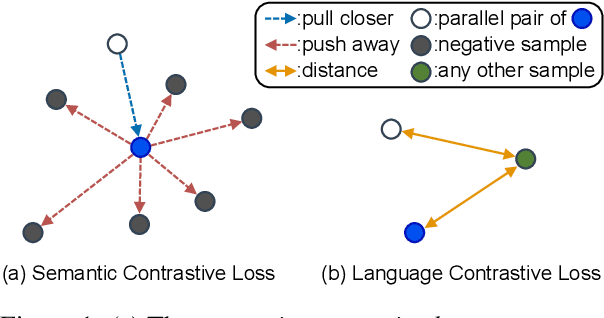

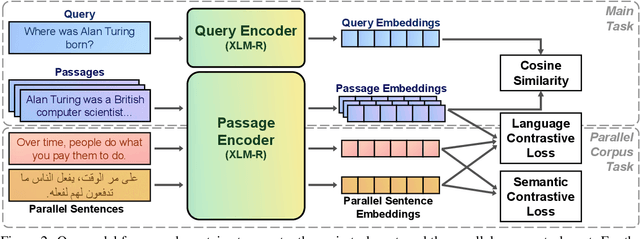

Abstract:Multilingual information retrieval is challenging due to the lack of training datasets for many low-resource languages. We present an effective method by leveraging parallel and non-parallel corpora to improve the pretrained multilingual language models' cross-lingual transfer ability for information retrieval. We design the semantic contrastive loss as regular contrastive learning to improve the cross-lingual alignment of parallel sentence pairs, and we propose a new contrastive loss, the language contrastive loss, to leverage both parallel corpora and non-parallel corpora to further improve multilingual representation learning. We train our model on an English information retrieval dataset, and test its zero-shot transfer ability to other languages. Our experiment results show that our method brings significant improvement to prior work on retrieval performance, while it requires much less computational effort. Our model can work well even with a small number of parallel corpora. And it can be used as an add-on module to any backbone and other tasks. Our code is available at: https://github.com/xiyanghu/multilingualIR.
Entailment Tree Explanations via Iterative Retrieval-Generation Reasoner
May 18, 2022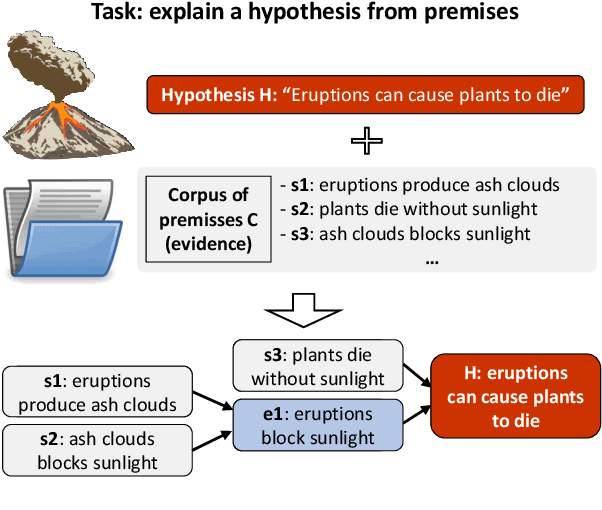
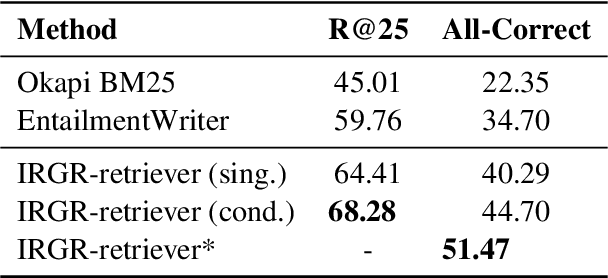


Abstract:Large language models have achieved high performance on various question answering (QA) benchmarks, but the explainability of their output remains elusive. Structured explanations, called entailment trees, were recently suggested as a way to explain and inspect a QA system's answer. In order to better generate such entailment trees, we propose an architecture called Iterative Retrieval-Generation Reasoner (IRGR). Our model is able to explain a given hypothesis by systematically generating a step-by-step explanation from textual premises. The IRGR model iteratively searches for suitable premises, constructing a single entailment step at a time. Contrary to previous approaches, our method combines generation steps and retrieval of premises, allowing the model to leverage intermediate conclusions, and mitigating the input size limit of baseline encoder-decoder models. We conduct experiments using the EntailmentBank dataset, where we outperform existing benchmarks on premise retrieval and entailment tree generation, with around 300% gain in overall correctness.
Contrastive Document Representation Learning with Graph Attention Networks
Oct 20, 2021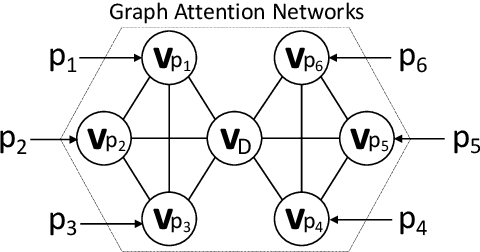
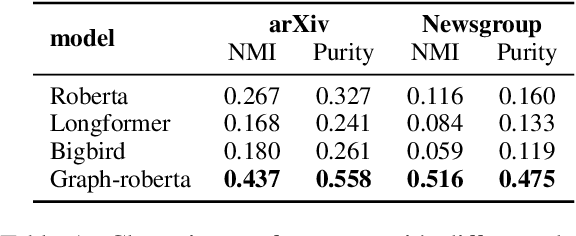
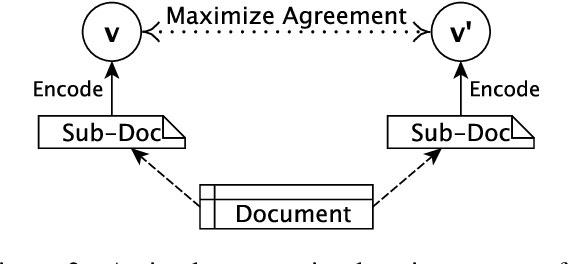

Abstract:Recent progress in pretrained Transformer-based language models has shown great success in learning contextual representation of text. However, due to the quadratic self-attention complexity, most of the pretrained Transformers models can only handle relatively short text. It is still a challenge when it comes to modeling very long documents. In this work, we propose to use a graph attention network on top of the available pretrained Transformers model to learn document embeddings. This graph attention network allows us to leverage the high-level semantic structure of the document. In addition, based on our graph document model, we design a simple contrastive learning strategy to pretrain our models on a large amount of unlabeled corpus. Empirically, we demonstrate the effectiveness of our approaches in document classification and document retrieval tasks.
Capturing Argument Interaction in Semantic Role Labeling with Capsule Networks
Oct 07, 2019
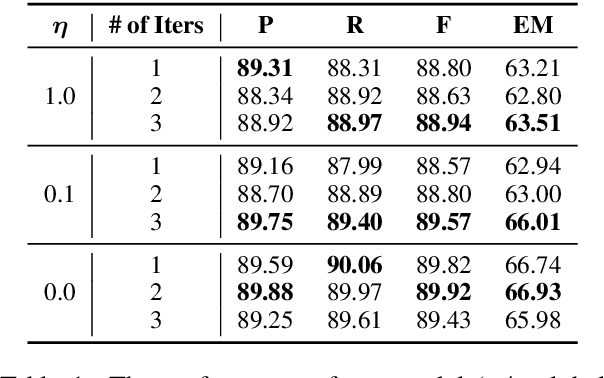
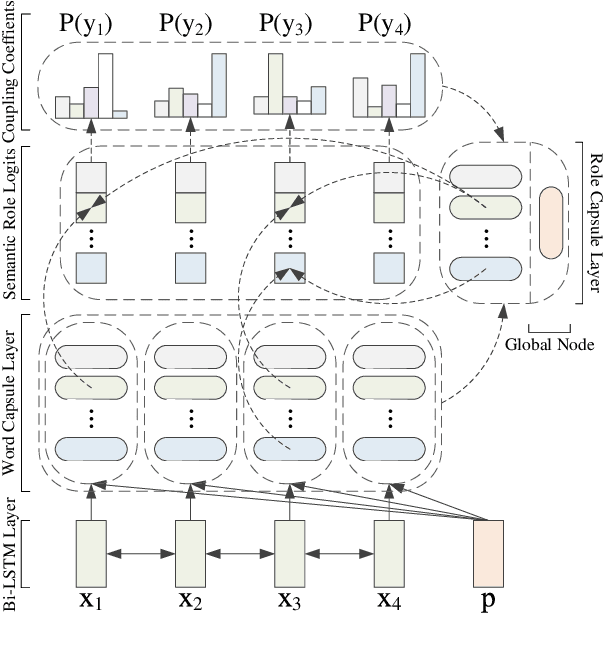
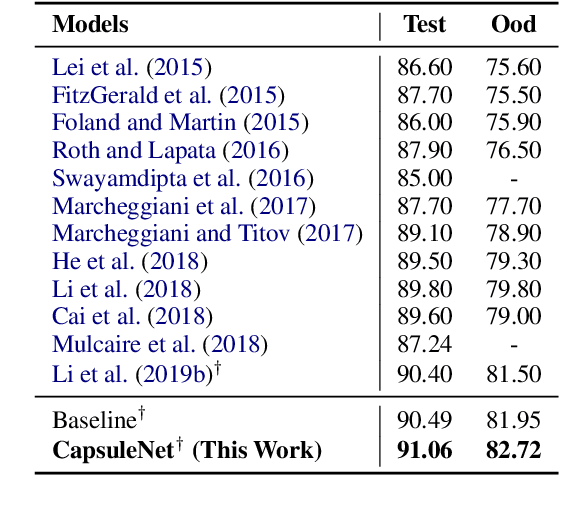
Abstract:Semantic role labeling (SRL) involves extracting propositions (i.e. predicates and their typed arguments) from natural language sentences. State-of-the-art SRL models rely on powerful encoders (e.g., LSTMs) and do not model non-local interaction between arguments. We propose a new approach to modeling these interactions while maintaining efficient inference. Specifically, we use Capsule Networks: each proposition is encoded as a tuple of \textit{capsules}, one capsule per argument type (i.e. role). These tuples serve as embeddings of entire propositions. In every network layer, the capsules interact with each other and with representations of words in the sentence. Each iteration results in updated proposition embeddings and updated predictions about the SRL structure. Our model substantially outperforms the non-refinement baseline model on all 7 CoNLL-2019 languages and achieves state-of-the-art results on 5 languages (including English) for dependency SRL. We analyze the types of mistakes corrected by the refinement procedure. For example, each role is typically (but not always) filled with at most one argument. Whereas enforcing this approximate constraint is not useful with the modern SRL system, iterative procedure corrects the mistakes by capturing this intuition in a flexible and context-sensitive way.
Switch-LSTMs for Multi-Criteria Chinese Word Segmentation
Dec 19, 2018

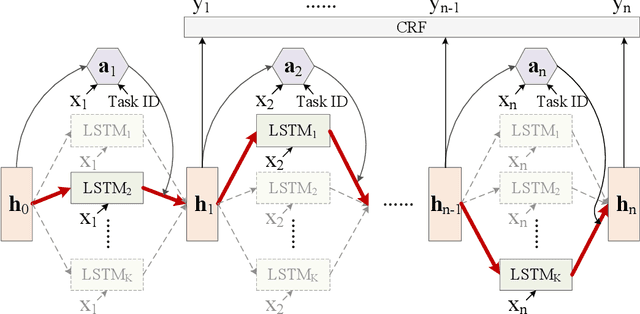
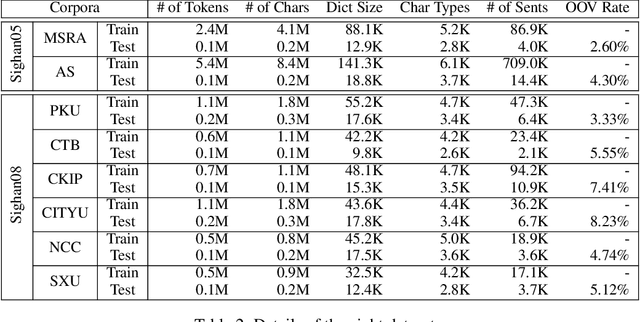
Abstract:Multi-criteria Chinese word segmentation is a promising but challenging task, which exploits several different segmentation criteria and mines their common underlying knowledge. In this paper, we propose a flexible multi-criteria learning for Chinese word segmentation. Usually, a segmentation criterion could be decomposed into multiple sub-criteria, which are shareable with other segmentation criteria. The process of word segmentation is a routing among these sub-criteria. From this perspective, we present Switch-LSTMs to segment words, which consist of several long short-term memory neural networks (LSTM), and a switcher to automatically switch the routing among these LSTMs. With these auto-switched LSTMs, our model provides a more flexible solution for multi-criteria CWS, which is also easy to transfer the learned knowledge to new criteria. Experiments show that our model obtains significant improvements on eight corpora with heterogeneous segmentation criteria, compared to the previous method and single-criterion learning.
Exploring Shared Structures and Hierarchies for Multiple NLP Tasks
Aug 23, 2018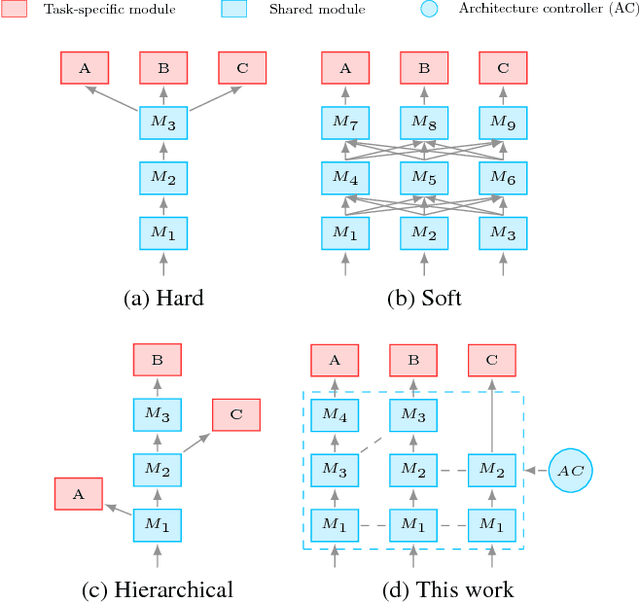
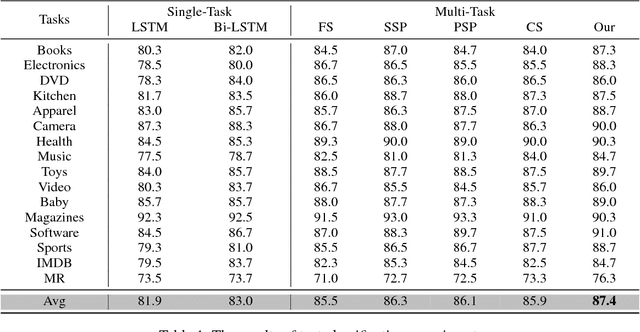
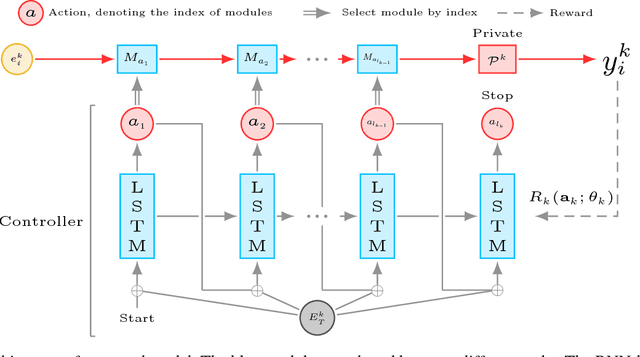
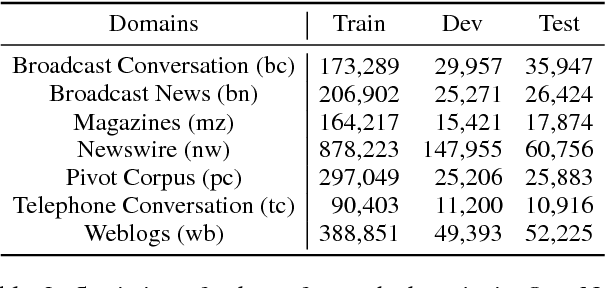
Abstract:Designing shared neural architecture plays an important role in multi-task learning. The challenge is that finding an optimal sharing scheme heavily relies on the expert knowledge and is not scalable to a large number of diverse tasks. Inspired by the promising work of neural architecture search (NAS), we apply reinforcement learning to automatically find possible shared architecture for multi-task learning. Specifically, we use a controller to select from a set of shareable modules and assemble a task-specific architecture, and repeat the same procedure for other tasks. The controller is trained with reinforcement learning to maximize the expected accuracies for all tasks. We conduct extensive experiments on two types of tasks, text classification and sequence labeling, which demonstrate the benefits of our approach.
 Add to Chrome
Add to Chrome Add to Firefox
Add to Firefox Add to Edge
Add to Edge